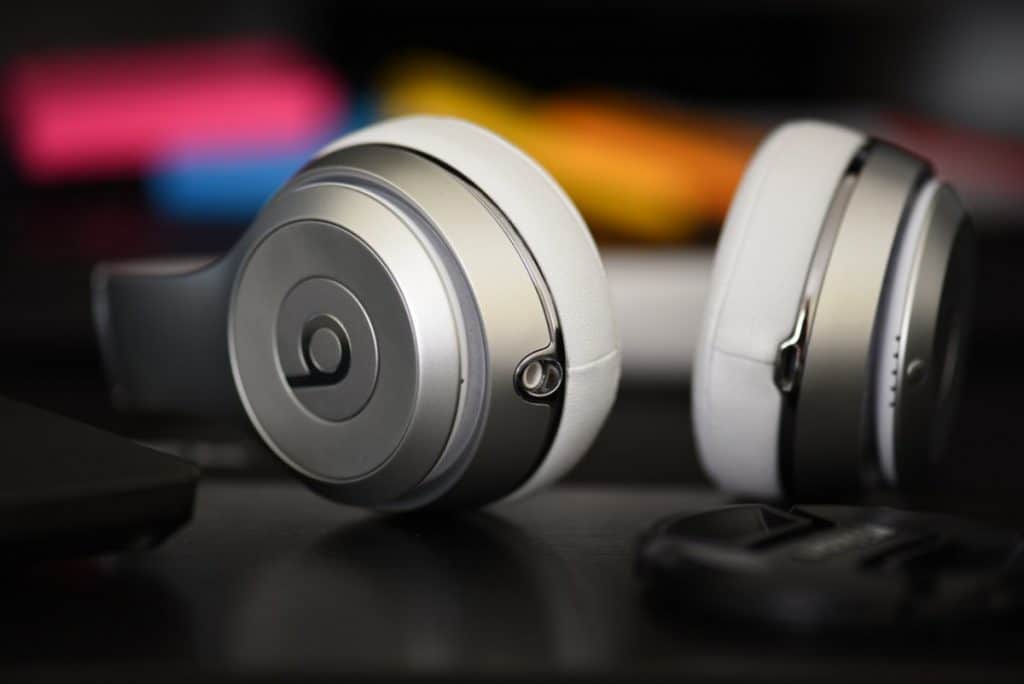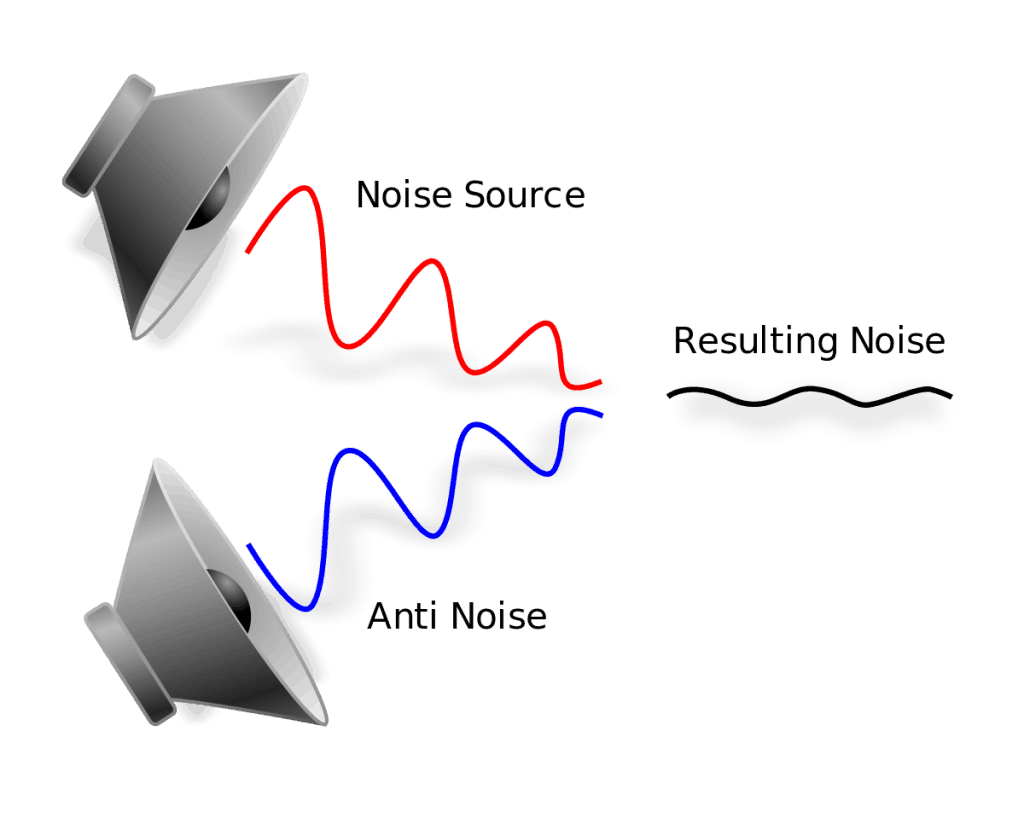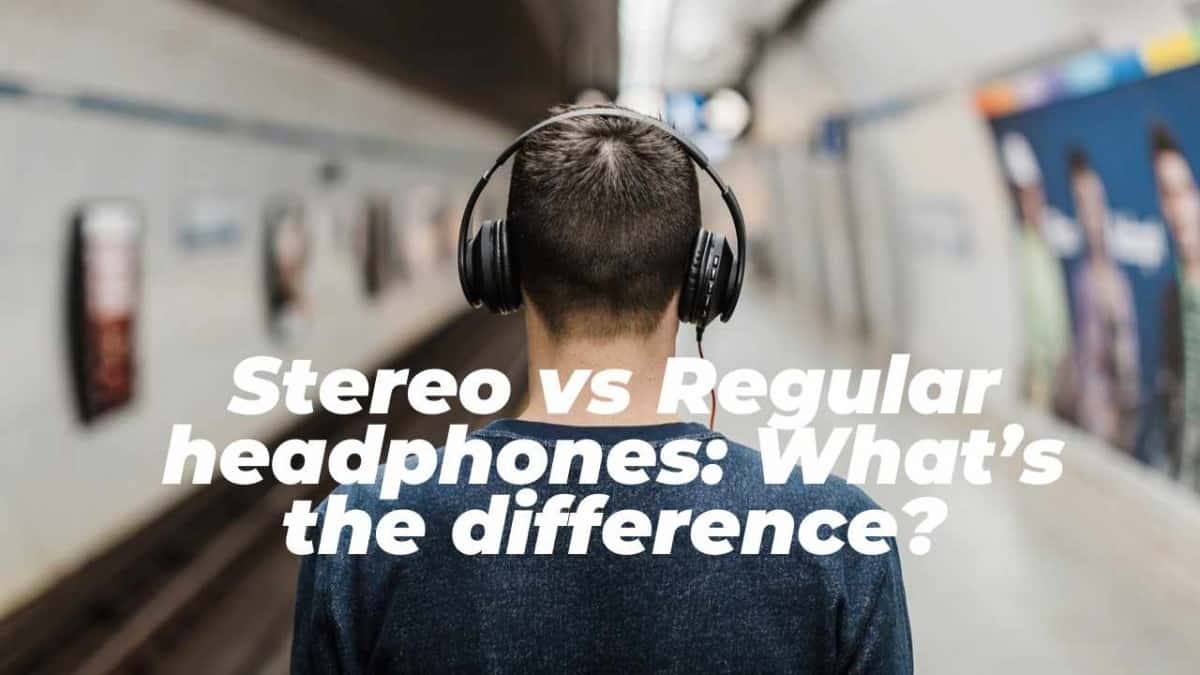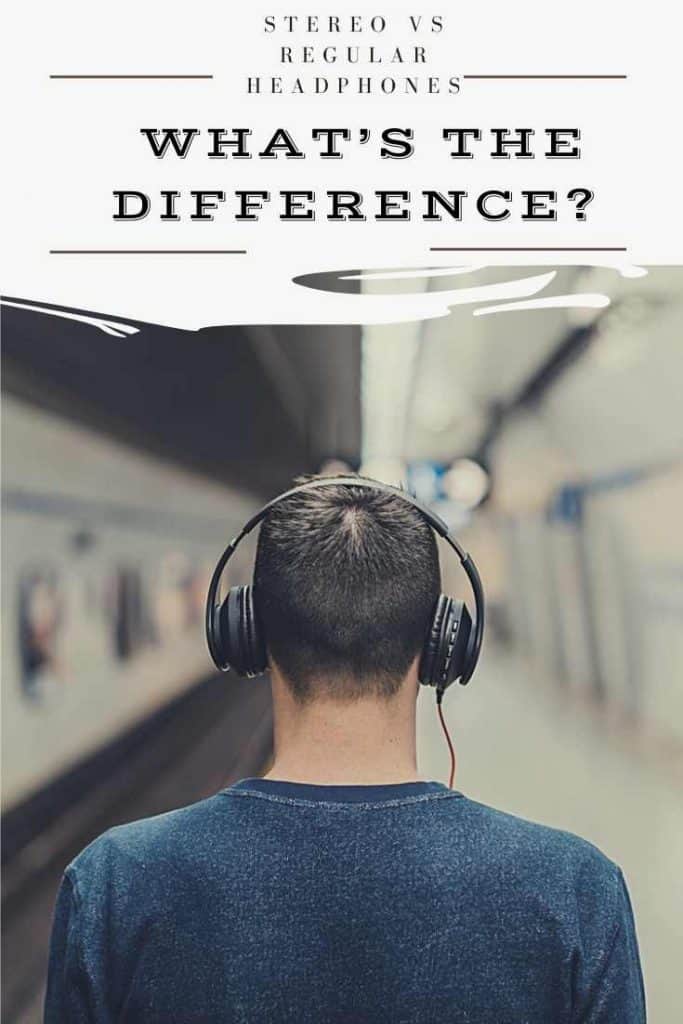If you’ve been shopping around for headphones or researching a little bit about them for whatever reason, you must have come across several comparisons between stereo and regular headphones. Headphones come in all manner of sizes, shapes, and configurations. But perhaps the most crucial consideration is the sound quality and characteristics.
When comparing or distinguishing stereo vs. regular headphones, what you’re really looking at here is the difference between stereo and mono headphones.
What many people mean when they say ‘regular’ is ‘mono.’ So to best understand stereo vs. regular headphones, we need to take one step back and dig a little deeper into the background of what makes the stereo and mono sounds.
Speaking of sounds, you will most likely know the difference between mono and stereo, but can you explain the real meaning to someone? We will try to explain that in this article in the simplest of terms possible.
Difference between Stereo and Mono

Many explain the difference between stereo sound and mono sound by merely stating that the former is more “full,” while the latter is more aseptic and less engaging.
This could be partly true, but it is not the real explanation of the difference between the two concepts. The difference is based exclusively on the perception of sound to the human ear, but in reality, to be precise, we need to go back to the sound source.
Before going into more or less technical explanations, let’s just mention that the difference comes from the origin, or from the input of the signal that goes to the speakers.
In mono sound, there is only one input that is distributed equally to the right and left speakers. In stereo sound, you have two distinct signals, one for each speaker. There will be an input for the right speaker and another input signal, different from the first, for the left speaker.
Usually, the sound sources are never characteristically the same. There is always a minimal difference between the two sources, especially in radio and television broadcasts or in-studio music recordings.
The number of speakers doesn’t matter in defining the two types of sounds, but keep in mind that with a single speaker, it is not possible to detect the stereo sound.
This is the difference between stereo and mono explained briefly from the conceptual point of view. It is, therefore, the number of input sources that determines the characteristics of the sound, mono, or stereo.
Today the mono sound is different than it used to be. If the stereo sound has two L and R sources (Left channel and Right channel), the modern mono sound is seen as the sum of the two, i.e., L + R.
Having briefly described that stereo and mono sounds are predefined at the source, let’s take a quick look at how the two sounds differ in more specific terms.
Mono Sound
Mono, or better known as monophonic sound reproduction, is the reproduction of single-channel sound. Usually, only one microphone and one speaker are used. When using headphones and many speakers, the channels come from a single signal.
Although mono is mostly no longer in use, it is still used by the wireless telephone communications industry. Telephone companies and even some radio stations, especially two-way radios, still use mono.
Stereo Sound
Stereo or stereophonic sound is the sound that comes from two or more sources. It usually spaced apart so that it can reproduce the sound in such a way that you can detect having come from a certain distance and a specific direction.
Stereo is commonly used in most forms of audio recording and broadcasting, such as recording of musicians’ songs and the sound in films, radio, and television broadcasts.
Undoubtedly, the stereo sound is more entertaining and engaging. But to appreciate it in all its being, you should place yourself in the perfect listening position, with the speakers positioned correctly at a predefined distance.
Today the stereophonic sound is present everywhere. From the television, for example, it is difficult to appreciate the sound depth since the speakers are very close together and reduce the spatiality.
Despite being stereo, in these cases, the sound is not appreciated and appears entirely similar for what you would hear in mono mode. It is these situations of imperfect listening that leads to some people to say that there are no significant differences between the two types of sounds.
Not every sound coming from headphones can be called stereo in all respects. That is because they are models in which information only comes to one channel and then is transmitted to the other.
To fully appreciate the stereophony, it is a good idea to arrange the audio speakers correctly and place yourself in the center. A Home Theater System or a stereo headphone, for example, is a perfect way to capture sound in all its nuances, identifying the sounds that come from the left and right speakers.
So, what is the real difference between mono and stereo sound?

Although mono has been replaced in almost all applications, it is still used in cases where stereo does not bring many benefits, such as phones or two-way radios. In both cases, mono delivers a better result than stereo with less bandwidth and power. Mono can also be compared to black and white images for movies.
Sometimes mono is used for artistic reasons instead of stereo, just like the first four albums of The Beatles were re-released to commemorate their use of mono for the original release. Hearing aids also use mono compared to stereo because stereo is not required. However, stereo is still standard in today’s broadcasting and recording industry.
Stereo and mono have changed the way we experience the sound over the years. If not for them, we would be forever limited to hearing sounds up close to appreciate the experience. Now we can listen all over the world and still feel close to us.
Mono or Stereo: Which One To Choose?
Technically, a stereophonic sound is better than a mono one. The fact that it’s being generated by a double source makes it inevitably more complete, managing to fill the environment and the human ear more. But not everyone can appreciate this effect.
While the stereophonic sound appears richer, the monophonic tends to sound flatter, and devoid of any acoustic nuance and could be more pleasing to someone precisely for these reasons.
Furthermore, it’s not always easy to enhance the stereo sound since its characteristics depend on the environments and the listening contexts.
If the audio system is well configured, with quality instruments and the right arrangement, the stereo sound has no equal.
In other situations, it might be even much clearer and cleaner than what you get from the mono signal. When listening to music, a live concert, or a movie, stereo sound is the most appreciated one because the sound is already thought to come out with this mode.
For things like a political debate, or a talk show broadcast on television, mono listening is perhaps the best solution to be able to hear a clearer and cleaner sound.
The same is true when attending a live debate: the mono sound is simpler and more suitable on these occasions, and the stereophony appears to add unnecessary inequalities and interferences. When a radio station is broadcasting on a weaker frequency, the sound quality tends to be poorer in quality with stereo headphones.
On the other hand, if you switch to mono headphones, you notice a gain in terms of power, volume, and clarity of the transmitted audio.
That happens because, with a weak quality signal, the high frequencies are lost and leaving mostly the low frequencies. The mono headphones conceal this loss, making one perceive the audio transmissions as a whole.
Some car radios automatically switch from the stereo sound to the mono sound to try to offer a clearer and cleaner listening experience.
In summary
• Mono is a sound replication method that uses only one signal source. This was the old method of transmitting and recording sound and was discontinued the introduction of stereo, although mono is still used in some cases today.
• Stereo is a sound replication method that uses multiple sources to create the illusion that the sound comes from a specific direction at a certain distance from you. This is the current standard for recording and transmitting sound.
With that said, it’s safe to conclude that regular headphones can only detect and play audio on the mono mode why stereo headphones can recognize and play audio in stereo mode.
Buying Guide: How to choose your headphones?
Like smartphones, or rather any object that you take everywhere with you, headphones are as many tools as fashion accessories. We find all formats, all colors, and especially … very variable qualities, both in terms of finish and sound.
From the most discreet headphones to the headphones that completely cover your ears, here are some tips and considering when buying headphones.
What kind of headphones?
There are three main categories of headphones;
1. “Headband”, Headphones, also called “arch”
These headphones have a bow and two earpieces, whose pads surround the ear (circum-aural) or are just placed on the ear (supra-aural). The circum-aural models are bulkier but often more comfortable than the supra-aural models — besides, they better at isolating external noises.
These two models of headphones are generally of closed type, but there are some open models, or semi-open, which have a ventilation grid on their external faces. They offer a better quality sound (the membrane is freer to move), but at the expense of insulation. You can hear the surrounding noises, and your neighbors hear your music.
2. Traditional Headphones.
Supplied with many smartphones, they lodge in the ears but do not isolate you much from the outside, and their sound quality tends to be average. Also called atria headphones in some cases.
3. In-Ear Headphones or Earphones.
These headphones have tips of varying sizes (you have a choice of sizes) that fit deep enough into the ear canal. Compared to traditional headphones, they offer better sound quality and more effective isolation from the outside environment, although some users have trouble keeping them in place.
For Which Use?
- At home: headband, circum-aural headphone types are the most preferred excellent sound quality.
- In the office: if you have a noisy office, you might need a headset with a bit of noise insulation to enjoy your listening.
- In transit: active noise reduction is recommended. At worst, opt for an in-ear model to offer reasonable isolation while still being able to keep tabs on what is happening around you.
- For sports: Choose headphones that fit the sport. Preferably, go for models that have fasteners to keep them in place during sudden movement. In addition, they should be protected against sweat and precipitation.
See my post How to choose a pair of headphones that are right for you. For more info.
Wired Or Wireless?
A wired headset has three advantages over a wireless model: it costs less, does not require recharging a battery, and is not sensitive to disturbances from other signals during the transmission of sound. In general, the wired headsets have an audio cable, a remote control that includes a microphone, as well as buttons to control the volume, reading, and taking phone calls.
Be careful when buying because smartphones with jacks have different remotes depending on the type of smartphone (Android or Apple). Also, some devices, such as the latest iPhone, no longer have a jack and USB Type-C. So first, check the compatibility with your device.
When it comes to wireless headphones, you will not be bothered by a wire between the headset and the mobile device. Manufacturers even offer True Wireless models, such as the Apple AirPods, with no cable between the two headphones. When buying a wireless headset, take into account the battery life, to avoid having to recharge it too often.
With Or Without Noise Reduction?

Noise reduction is a feature that helps to isolate you from outside noise, for example, when moving through busy streets. This isolation also eliminates the need to increase the volume of the music to compensate for the noise.
The circum-aural and in-ear headphones come with a passive noise reduction, to offer you the first level of insulation by their simple design. Other designs come with an active noise cancellation technology that uses a microphone and an electronic circuit to cancel the noise. Noise reduction headsets often require a battery and are generally more expensive than models that are not equipped with this feature.
Additional functions
As mentioned above, some pairs of ear-canal phones are aimed primarily at people who are active in sports. A few features are then dedicated to them, like a heart rate sensor directly integrated into the device, whose accuracy is supposed to exceed that of standard connected wristbands.
Others come with activity trackers and, coupled with a mobile application, make it possible to estimate the number of steps achieved, calories burned, and to detect the activity practiced. Accessories specifically designed for outdoor uses are generally resistant to moisture and sweat.
The Bottom Line
Stereo headphones and regular (mono) headphones are indeed significantly different in terms of the characteristics and quality of sound produces. Stereo headphones tend to create a full, ‘surround effect’ while the mono headphones tend to be flat. If you’re shopping around for entertainment headphones, you want to stick with stereo headphones and not the mono models.
Helpful reviews on some of the top-selling headphones.
- Top 10 Latest Headphones You Should Know About
- Elux By Specter Wireless Sports Headphone Review
- Bose QuietComfort 35 Wireless Headphone Review
- Sony MDR-1A Hi-Res Stereo Headphone Review



